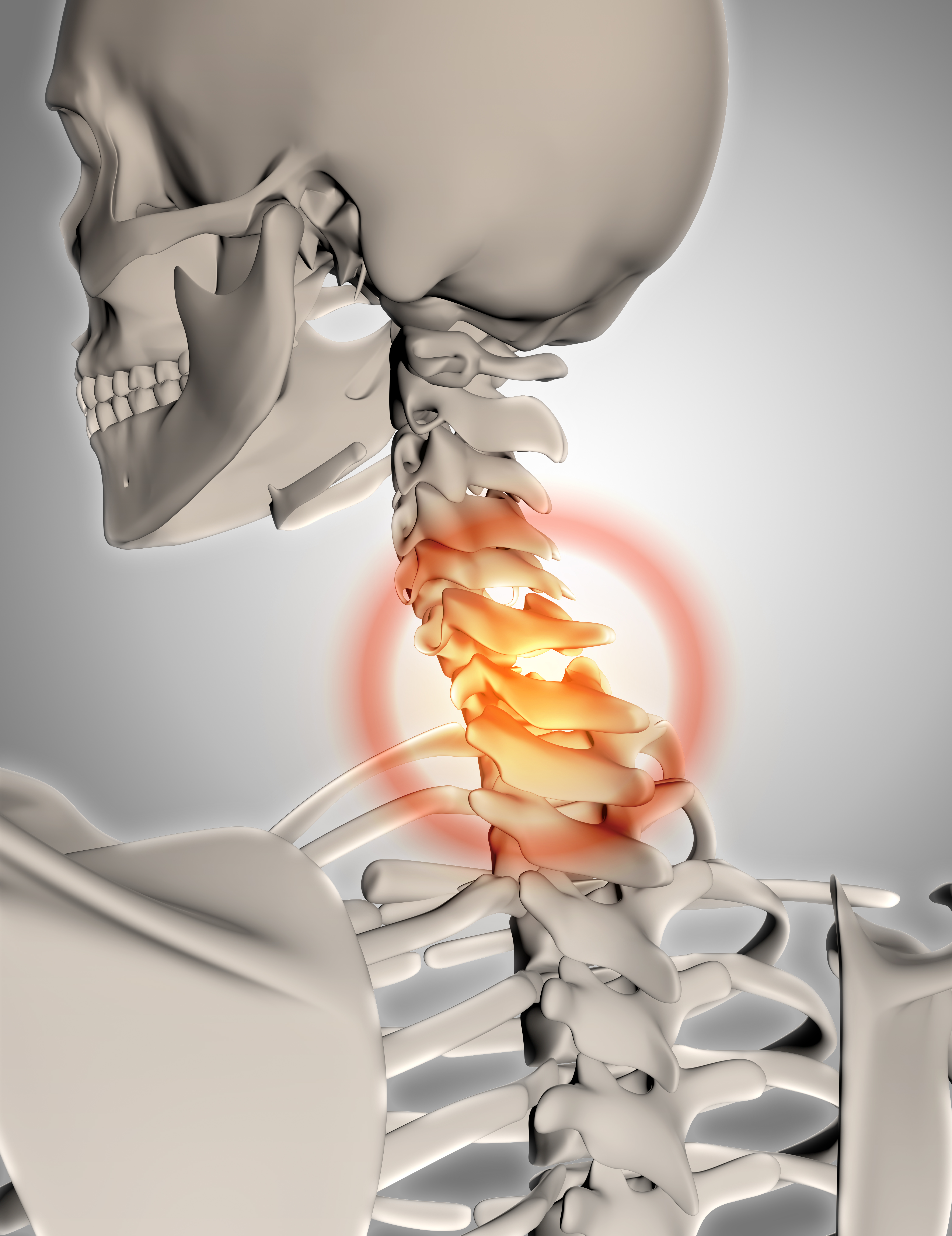Expert Cervical Spondylosis Treatment in Vadodara
Comprehensive care for neck arthritis and degeneration. Regain mobility and live without chronic neck pain through specialized chiropractic treatment.

Understanding Cervical Spondylosis
Cervical spondylosis is the age-related wear and tear affecting the spinal disks in your neck
What is Cervical Spondylosis?
Cervical spondylosis, also known as neck arthritis or cervical osteoarthritis, is a common condition that develops from chronic degeneration of the cervical spine. As the disks dehydrate and shrink, bone spurs (osteophytes) often develop as the body attempts to strengthen the area.
- Disk Degeneration - Spinal disks dry out and shrink, reducing cushioning between vertebrae
- Bone Spurs - Extra bone growth that can compress spinal nerves or the spinal cord
- Herniated Disks - Cracks in the disk's exterior allow soft interior material to escape
- Ligament Stiffness - Neck ligaments become less flexible with age
- Arthritis - Cartilage breakdown in the facet joints of the cervical spine
While cervical spondylosis is a natural part of aging, proper treatment can significantly reduce symptoms and improve quality of life.

Recognizing Cervical Spondylosis Symptoms
Symptoms vary based on the severity and location of spinal degeneration
Neck Pain & Stiffness
Chronic neck pain that may radiate to the shoulder blades. Stiffness is often worse in the morning or after inactivity.
Headaches
Frequent tension headaches originating from the base of the skull, often described as a band-like pressure.
Arm & Hand Symptoms
Numbness, tingling, or weakness in shoulders, arms, or hands due to nerve compression in the cervical spine.
Reduced Mobility
Difficulty turning the head fully, looking up or down, and performing normal neck movements without pain.
Our Cervical Spondylosis Treatment Approach
Comprehensive, non-surgical care to manage symptoms and improve spinal function
Diagnostic Assessment

Cervical Range Assessment
Detailed evaluation of neck mobility, muscle strength, and specific movements that reproduce symptoms.

Neurological Testing
Assessment of reflexes, sensation, and muscle strength in arms and hands to identify nerve involvement.

Advanced Imaging
X-rays, MRI, or CT scans to visualize bone spurs, disk degeneration, and spinal cord or nerve compression.
Our Treatment Methods

Cervical Adjustments
Precise, low-force adjustments to restore proper joint motion, reduce nerve irritation, and improve alignment.

Cervical Traction
Gentle stretching of the neck to relieve pressure on compressed nerves and create space between vertebrae.

Soft Tissue Therapy
Targeted massage and myofascial release to relieve muscle tension, spasms, and improve blood flow.

Neck Rehabilitation
Customized exercises to strengthen supporting muscles, improve flexibility, and stabilize the cervical spine.

Posture Correction
Education and training on proper neck alignment during daily activities to reduce stress on cervical structures.

Lifestyle Guidance
Practical advice on ergonomics, sleeping positions, and activity modification to manage symptoms long-term.
Patient Success Story
Real results from our cervical spondylosis treatment
"I suffered from severe neck pain and headaches for years due to cervical spondylosis. After trying various treatments with little success, I found Spine-X. Dr. Zinzala's gentle adjustments and the rehabilitation program have given me my life back. I can now turn my head without pain and my headaches are completely gone. The education on proper posture has been life-changing."
- Patient from Vadodara (Cervical Spondylosis Treatment Success)
Managing & Preventing Cervical Spondylosis Progression
Proactive strategies to maintain cervical health and slow degeneration
Proper Screen Positioning
Keep computer monitors at eye level to avoid constant neck bending. Take regular breaks from screen time.
Supportive Sleep Setup
Use a cervical pillow that maintains natural neck curvature. Avoid stomach sleeping which strains the neck.
Regular Movement
Avoid prolonged static positions. Perform gentle neck stretches throughout the day to maintain mobility.
Neck Strengthening
Regular exercises to strengthen neck and upper back muscles that support proper cervical alignment.
Posture Awareness
Maintain ears aligned with shoulders when sitting or standing. Avoid forward head posture during daily activities.
Stress Management
Chronic stress causes muscle tension in the neck and shoulders. Practice relaxation techniques regularly.
Ready to Find Relief from Cervical Spondylosis?
Start your journey to better neck health with our specialized non-surgical treatment
85% Success Rate in Symptom Management
Most cervical spondylosis patients achieve significant pain relief and functional improvement through our conservative approach